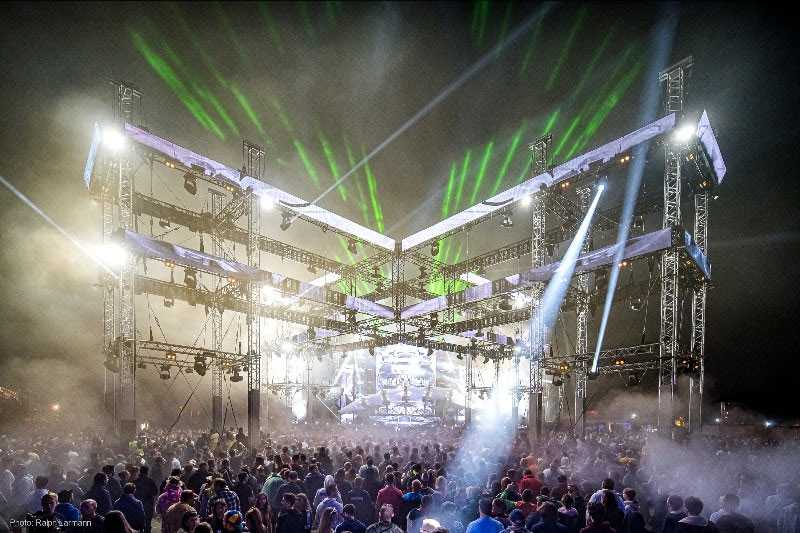Nature One lets rip with GLP KNV Cube
- Details

As always, at the centre of the festival site was the huge dancefloor, named Open Air Floor and as in previous years, Gerdon design was responsible for the entire production design. Here dancing takes place in the open air, while the majority of lighting technology - as in a real club - is above the heads of the audience, attached to a 26 x 26m truss construction which was raised to a height of 15m.
Although Nature One does not rely on a lush and decorative backdrop construction like many other EDM festivals, the stage, which measures 46m wide, 18m high and 16m deep, was y impressive, as DJs took their place under the stage roof, renowned from Genesis' 2007 Turn It On Again tour.
While the aim of creating something new every year has been upheld in recent years, the organisers of Nature One decided in this special anniversary year to develop a new design template, with a value that will be further developed in subsequent years.
An essential design element this year was the creation of 48 sheet metal pyramids (in 2 x 2m sections), which were directly attached to the Layher stage construction. These were clad with 25 x 100cm LED panels and equipped in the centre of each with a GLP KNV Cube.
"This gave the stage, which previously consisted only of LED screens and occasional banners, a truly three-dimensional look for the first time," says Thomas Gerdon, managing director of Gerdon design, and lighting designer of Nature One.
"The KNV systems are waterproof, which is crucial on the Open Air Floor,” he says. “If it rains, lamps will get it full on. This is not least a question of economics, as without IP-rated devices, weather protection must be included in the calculation. It has to be paid, installed, derigged and maintained, which of course has a noticeable effect on the costs. Although IP devices are slightly more expensive, the bottom line is that it is still cheaper than ordinary lamps with conventional weather protection.
“Apart from that, I do not know of anything that is as incredibly bright in the stroboscope area as the KNV system, and particularly in the field of techno it is the perfect thing,” adds the designer. And yet, KNV can do so much more than just deliver brightness. "In fact, the system is enormously versatile,” confirms Gerdon.
“Because we had lots of LED screens around the pyramids, we managed to take full advantage of the KNV's flexibility by using the high-power white light LED from the light console, and all the RGB elements of the KNV Cube via pixel mapping from the media server. That's how we were able to add width to the available LED surfaces.”
A total of 24 KNV Dot, the smallest model in the KNV family, with just a single high-power pixel, were featured by the designer in the stage roof, and steered from the lighting desk. Here, the RGB pixels were deployed predominantly as washlight and for ‘camera flair’ effects, while the white light LED in the centre served as a strobe.
Lighting designer Thomas Gerdon was supported at Nature One by his lighting director Rando Lorenz and lighting operator Tobias Reinartz, while Marek Papke and Artur Kechter operated the media servers. Jens Diefenbach was technical director and Oliver Reis from schoko pro GmbH was on-site as project manager. The lasers were supervised by Laserfabrik.
(Jim Evans)
















